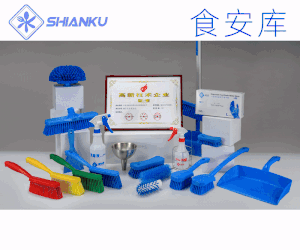食品伙伴網(wǎng)訊 2024年12月16日,歐盟食品安全局就一種食品酶內(nèi)切多聚半乳糖醛酸酶和β-葡萄糖苷酶的安全性評(píng)價(jià)發(fā)布意見。
據(jù)了解,這種食品酶是由非轉(zhuǎn)基因塔賓曲霉菌株ARO生產(chǎn)的,旨在用于5種食品制造過程。
經(jīng)過評(píng)估,專家小組認(rèn)為,在預(yù)期的使用條件下,不能排除通過飲食接觸引起過敏反應(yīng)的風(fēng)險(xiǎn)。根據(jù)所提供的數(shù)據(jù),小組得出結(jié)論,該食品酶在預(yù)期的使用條件下不會(huì)引起安全問題。部分原文報(bào)道如下:
The food enzyme containing endo-polygalacturonase and β-glucosidase (EC 3.2.1.15 and EC 3.2.1.21) is produced with the non-genetically modified Aspergillus tubingensis strain ARO by DSM Food Specialties B.V. The food enzyme was free from viable cells of the production organism. It is intended to be used in five food manufacturing processes. Dietary exposure was estimated to be up to 0.609 mg total organic solids (TOS)/kg body weight per day in European populations. Genotoxicity tests did not indicate a safety concern. The systemic toxicity was assessed by means of a repeated dose 90-day oral toxicity study in rats. The Panel identified a no observed adverse effect level of 2217 mg TOS/kg bw per day, the highest dose tested, resulting in a margin of exposure of at least 3640. A search for the homology of the amino acid sequence of the food enzymes to known allergens was made and four matches with food allergens and 22 matches with respiratory allergens were found. Known sources of food allergens were used in the food enzyme manufacturing process. The Panel considered that the risk of allergic reactions upon dietary exposure cannot be excluded. based on the data provided, the Panel concluded that this food enzyme does not give rise to safety concerns, under the intended conditions of use.
本文由食品伙伴網(wǎng)食品資訊中心編輯,供網(wǎng)友參考,有任何疑問,請(qǐng)聯(lián)系news@foodmate.net。
相關(guān)政策解讀











 地區(qū):
地區(qū):






 魯公網(wǎng)安備 37060202000128號(hào)
魯公網(wǎng)安備 37060202000128號(hào)



